How do you send a good follow-up email for sales and get a response?
How do you send a good follow-up email for sales? : Are you hesitant about writing a follow-up email? You’re not alone. Instinct tells us that if someone hasn’t responded to your previous email, they’re not interested and will be put off by us if we bother them again.
Unfortunately, in this case, instinct is wrong. Very few prospects will respond to your first email.
Build your follow-up email strategy with the following tips to get the desired results.
How to Write a Good Follow-Up Email?
Now that you know how vital follow-up is, let’s examine how to write a follow-up email.
When following up, you should develop the best subject line for your email. These little words can make or break your success. 47% of people open an email based on the subject line, and 69% consider it spam based on the subject line.

Spend time and effort on writing your email subject line. We’ll look at the different parts of a follow-up email and how to write one.
1. Establish the context of the email
When the recipient opens it, it’s a good idea to jog their memory by referring to a previous email or interaction. Even if your recipient’s name is blank, remind them they’ve already dealt with you before to increase the likelihood of a positive response to your follow-up.
Start the conversation like this:
We are following up on the email we sent you on [day of the week the email was sent] about [subject of the email].
I’m following up to see your thoughts on [subject of the email].
We saw that you read our previous email.
2. Provide value
You should never send a follow-up message without introducing yourself and demonstrating your value.
Avoid superficial follow-ups. Provide value in every interaction. Your follow-up should be worth opening, clicking, and responding to.
Offering something valuable, whether a physical product or a webinar, creates opportunities for natural engagement and follow-ups. So, for a minute, you’re no longer a salesperson, and you’ve given your audience something of value! Think of that value as an asset to them.
If you don’t provide some added value, there’s little reason to contact them and even less incentive to respond. You need to deliver value to the recipient every time.
3. Explain the reason for your email
Next, explain the reason for your follow-up email directly and concisely. Tell the recipient what you want. If this hasn’t changed from your previous email, remind them.
- [Product Name] could be an excellent fit for you in [potential role]. We’d love to discuss it with you.
- [Product Name] could be an excellent fit for you. Would you be interested in trying it out for a month or more (completely free of charge)?
We’ve just launched [product name], which could make a big difference in [potential role]. The link below will give you more information, but it would be great to discuss your current needs so I can understand how [product name] can help you.
Focus on the prospect here. Eliminate “we” from your text.
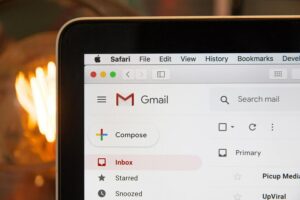
4. Include a Call to Action
Make it easy for the email recipient to respond. For example, if you’re setting up a meeting, suggest a specific date and time (and location if you’re setting up an in-person meeting).
- How about 2:15 pm on a Thursday?
- Are you interested in talking about this? Can you help us with this?
- If you want to learn more, reply “yes” to this email, and we’ll send you a short file.
If you’re part of a marketing team or a sales professional, leave no stone unturned. Make the call to action clear and compelling so it’s hard to resist. What exactly do you want them to do? Did you provide a link to your website? Tell them so you can get the best possible results.
5. End the email
End the interaction with the recipient in a natural and empathetic way.
- Let us know what you think! [Your Name]
- If you have any questions, let us know. [Your Name]
- We’re looking forward to talking to you [Your Name]
- We look forward to hearing from you! [Your Name]
Once you’ve crafted a great email, save it as a template so you and your teammates can use it again.
How do you send a good follow-up email for sales?
The Ideal Number of Follow-Up Emails by Response Rate
Response rate statistics show only 18% response to the first email sent, which drops to 13% for the fourth email. However, the sixth email in the sequence received a 27% response rate.
A similar study by Yesware showed a 30% response rate to the first email and 14% to the fourth. They sent 10 emails; even the last email had a 7% response rate.
However, 70% of email chains stop after just one unanswered email.
Nearly 80% of prospects say “no” four times before finally saying “yes.” But 92% of people give up after hearing “no” four times.
Only 8% of salespeople (those who follow up at least five times) close 80% of all sales.
Furthermore, another study found that a drip email series of four to seven messages gets three times more responses than chains of just one to three messages (27% and 9%, respectively). Even one follow-up can convert 22% more responses into sales.
Sending follow-up emails is essential (unless you want to lose the sale!).
Are there more optimal times and days to send follow-up emails? According to studies, Tuesdays are the best day to send emails, on average, while 6 am is the best time.
How long should you wait before following up?
Don’t wait too long.
Most emails are opened the day they’re sent; if the recipient wants to respond, they’ll do so the same day. That means if someone hasn’t responded the day you sent them, they probably won’t respond.
About 90% of recipients who open an email will do so the same day if they want to respond.
How long should you wait before sending a follow-up email?
Generally, waiting two or three days before sending your first follow-up email is a good idea. Then, extend the waiting period for each follow-up email by a few days after your first message.
You should experiment with the timing of your follow-ups. You want to follow up on your goals without annoying your audience. Keep going until you find it works for you and your audience.
By automating your follow-ups using email monitoring tools and email marketing automation, you’ll add a drip of messages to your marketing campaign.
Develop a Successful Email Follow-Up Strategy
So, now that you know the importance of follow-ups, how long to wait, and how many messages to send,
Before you get started, you need to set yourself up for maximum success. So what’s the first step? Write everything down.
Writing down your goals and routines is beneficial in many ways. It creates consistency among everyone on your team and can help you achieve your goals more effectively.
To maximize the success of your follow-ups, establish a set of “rules” regarding the timing, frequency, quantity, and content of your messages.
Diversify your communication channels.
Another key component of email follow-ups is an omnichannel approach.
Yes, email is the best communication channel, but that doesn’t mean other channels aren’t valuable.
If your audience is also active on LinkedIn, Twitter, or Instagram, you should engage them there.
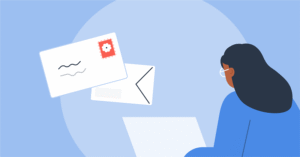
How do you send a good follow-up email for sales?
Consider an omnichannel approach that includes email, video, social media, and phone—especially if you’re not getting a response from just one. Companies with an omnichannel engagement process see 9.5% year-over-year revenue growth and increased engagement—nearly three times faster than those without.
Along the way, you’ll learn which channels your audience prefers, where they connect first, and what they do on each. Please get to know your leads and connect with them.
Decide what you want to achieve. Before you do anything, you need to decide what you want to accomplish with this email (or emails).
For example, you might want to:
- Get more information or specific information
- Arrange a meeting
- Make a sale
Every situation is unique, so be specific about what you want and need from a follow-up email, any campaign you’re working on, and every message you’re sending.
However, never send an email (follow-up or otherwise) unless you know exactly what you need it to accomplish.
Put yourself in your customers’ shoes.
Before you draft or send an email, consider user experience (UX). It’s a critical element in your business’s success, more important than price or the product or service itself.
Think about the frequency and engagement of your follow-up emails. Forget what the experts say you should or shouldn’t do and look at it from the customer’s perspective.
Too much follow-up is annoying. Too little is not good. Find the right balance for your goals.

Ask yourself: What is helpful to them? How do they feel? What kind of experience do they have? Do I have a reason to follow up (other than to follow up)?
Ask and answer these types of questions. You will be designing a follow-up campaign for them from the start, not for yourself. This can make all the difference.
Depending on your approach, not all follow-ups are created equal, so the context is key:
- If a prospect asks for a call or a trial, you can follow up further to fulfill their need.
- If they have downloaded something, they have shown interest but have not explicitly requested to be contacted, so you need to demonstrate your value (send a different follow-up email based on what they downloaded).
- When you send cold emails, you should keep it simple because they have not requested anything from you.
Here are 25 tips for crafting a follow-up email.
How do you send a good follow-up email for sales?
Follow-up Emails to Sell Products and Services
If the above suggestions aren’t enough, here are some tips for sales emails. These emails provide a framework, but personalization is key.
Quick Introduction and Value Creation
This is an example of a simple, polite follow-up email. It provides a relevant explanation of why you’re contacting them and a simple introduction. Sharing a snippet or two of your audience’s favorite text is also helpful. Rather than a follow-up, this email tries to change the conversation and create value.
Finally, a simple sign-up request can be answered with a yes or no. A simple formula like this works because it doesn’t take up much of your audience’s time, provides immediate value, and acts as a conversation rather than a sale.
Make it easy to respond with a yes or no.
You’ve probably seen this in your email inbox before, but that doesn’t mean you shouldn’t use it yourself. It’s a popular and effective tactic because it makes it easy for prospects to respond. Remember to consider how relevant it is to your audience and purpose.
Gauge Their Interest
If you use email marketing platforms, you can track things like email opens and clicks on links provided in the email. Since they clicked on something, they were at least interested, so this follow-up email is a great way to start a conversation.
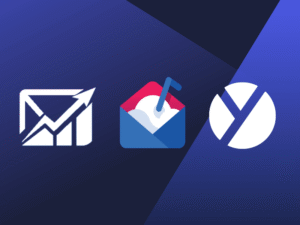
Demonstrate your strong belief that your product is right for the prospect.
Don’t give up if the prospect has a specific objection to your product or service. Address the concern and continue sending the email by demonstrating your complete confidence.
Keep it short and straightforward.
All sales emails should be short, but follow-up emails should be shorter. However, that doesn’t mean you have to skip all the pleasantries. You can still be polite, friendly, and, most importantly, human in a quick email.
Example #1: Ask for permission to call back later
Example #2: Make a quick introduction and add value
These examples take a personalized approach while still respecting the prospect’s time.
The second example aims to add value by sharing ideas, while the first gives the prospect some helpful tips and opens the door for exchanging ideas.
Be honest
Few people look forward to a cold call from a sales rep, but we accept it as part of our professional lives. Here, you must be honest with your follow-up email and its subject. Just because your prospect hasn’t responded to previous messages doesn’t mean they’re uninterested.

How do you send a good follow-up email for sales?
Walk Away Gently
Sometimes, you’ve reached the end of the road with a prospect, and wasting your time on them doesn’t make sense. Rather than giving up, it’s worth writing a goodbye email. In the subject line, clarify that you’ll follow up with them if they want.
Example #1: Is it time to leave?
Example #2: We didn’t choose a good time.
The second example is a little softer and shows empathy. Maybe they’re too busy, or continuing the interaction is no longer appropriate. You’re respectful and reiterate that you won’t bother them again.
There’s no rule about what a follow-up email should look like. However, a helpful follow-up email can increase response rates, so experiment with different methods.
Follow-up Emails After Sales Calls
Follow-up after a sales call is a must. You don’t have to be formal. Showing appreciation and providing a little more detail is enough. The following emails do just that.
Share something useful
Example #1: We learned something good from your call
It’s not always easy to remember everything on a phone or video call. Giving a complete summary of what you discussed and even adding a little more to the customer can cement your message in their mind.
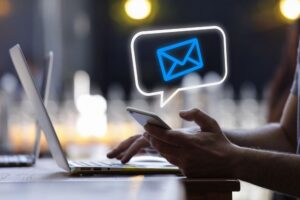
Address Them Yourself
Example #2: We Learned a Lot from You
This example starts with a polite introduction that shows appreciation. Acknowledge the pain points the recipient is facing to prove that you were listening. If you haven’t scheduled another meeting yet, modify this template to include a call to action and invite them to a meeting.
Types of Follow-Up Emails for Other Situations
Follow-up for Link Building
How do you do link building?
You often send an email that links to an old article or a broken link (404), then tell the site owner that you’ve published a new, updated article that can be added to their content. This is a tried and true method.
But more often than not, it’s not enough to guarantee a response.
If your email is met with deafening silence, here’s another valuable type of follow-up email.

Follow-up Emails for Cross-Sales
Let’s say you’re a freelance designer pitching your design services to a client.
In your communication email, you list all the companies you’ve previously helped and share an idea of how you can help them build their brand.
Guest Post Follow-up Email
How do you promote a guest post in a larger publication?
Typically, you do this by writing a great follow-up email that includes key elements like an introduction, headline ideas for the guest post, and links to your previously published content.
But sometimes, even that’s not enough. In these cases, you can use this follow-up email to showcase you as an intelligent and hard-working writer.
Event Follow-up Email
Following up after an event is a great way to keep you at the top of your new audience’s inbox. But remember, many people walk away from a conference or networking event with many new contacts. That means they may be flooded with emails after the event.
Sometimes, emails get lost in the shuffle.
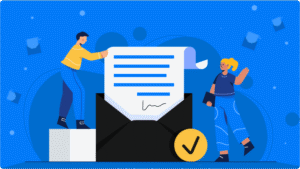
How do you send a good follow-up email for sales?
A successful follow-up email is easier than it sounds. Try a new subject line and mention key details from the in-person interaction. Maybe you wore an unusually colored shirt or talked about a favorite artist. Mention it!
Invoice Follow-up Email
This is one of the most awkward emails you’ll ever send. But it has to be done.
Following up after an invoice is difficult for both parties, but it’s necessary. The key is to be both respectful and direct.
Follow-up Email Expert Tips
Here are some expert tips:
- Don’t forget to experiment with different subject lines in addition to the body of the email. Some subjects, like “quick questions,“ are not considered, while others are more likely to trigger spam filters, especially since the recipient may not know who sent the email. Test subject lines on your target audience.
- Try sending a calendar link with a specific time, date, and details in the notes section.
- Using video in emails is growing in popularity and can increase your click-through rate by up to 300%.
- Plan for follow-ups.
- Personalization is key. Mentioning your industry, location, or relevant competitors is also a helpful trick.
- Send an email in the late afternoon or early evening, then send another email the next morning with the link or resource you “forgot“ in the first one. Forgetfulness makes you seem more human and puts your name in front of the audience twice.
- Write your email short, to the point, and fully mobile-friendly (over half of the emails are open on mobile).
- Eliminate phrases like “if you’re okay with that“ and “sorry to bother you, but…“ from your message.
- Personalize in human ways, not just business-like ways. For example, if you’re visiting their city next week, ask them what they think of a restaurant they recommend.
- Having the right mindset helps build a real rapport.
- If you still don’t hear back, find the email address of someone else at the company to contact.
Finally
Follow-up is a long game. Your ideal customer may not be ready to buy now, so the key is consistently following up. Ensure your message doesn’t get lost in the pile of unanswered messages.
Source
https://www.mailshake.com/blog/follow-up-email-strategy